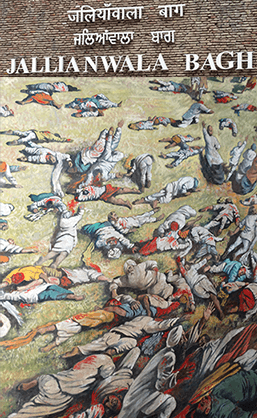An Overview of Ncert Solutions Class 12 Business Studies Chapter 5
FAQs on Ncert Solutions Class 12 Business Studies Chapter 5
1. What kind of short-answer questions are considered important from the chapter 'Understanding Diversity' for Class 6 exams?
For the CBSE 2025-26 exams, important short-answer questions (typically for 2-3 marks) focus on core concepts. Students should prepare for questions such as:
- List three ways in which people in India are diverse (e.g., language, festivals, food).
- Define the terms prejudice and stereotype with one example for each.
- How did the Jallianwala Bagh massacre demonstrate unity among different communities?
- What did Jawaharlal Nehru mean by the phrase "Unity in Diversity"?
2. Which case studies from the NCERT textbook are essential for answering 5-mark questions on diversity?
To score high on 5-mark questions, students must master the two main case studies from the chapter. Answering questions on these is a frequent trend in exams.
- Ladakh and Kerala: You will be expected to compare and contrast how geographical and historical factors influenced their culture, occupation, and food habits. This is a classic long-answer question.
- Samir Ek and Samir Do: This story is used to test the understanding of both diversity (different religions) and inequality (different economic and educational opportunities).
3. How can understanding historical and geographical factors help in scoring full marks on questions about Ladakh and Kerala?
This is a Higher Order Thinking Skills (HOTS) question. For a high-scoring answer, you must connect the factors to the outcomes. For instance:
- Geographical Factors: Explain that Ladakh's cold desert climate leads to wool weaving (Pashmina shawls), while Kerala's coastal climate is ideal for growing spices.
- Historical Factors: Mention that Kerala's location on trade routes brought Arab and Chinese traders, influencing its culture, while Ladakh's connection to Tibet influenced its form of Buddhism. Linking these specific points to the resulting diversity is key for full marks.
4. What is the difference between diversity and inequality, and why is this an important question for exams?
This is a critical concept frequently tested in exams to check conceptual clarity.
- Diversity refers to differences in background, such as religion, language, or culture. For example, Samir Ek being Hindu and Samir Do being Muslim is a form of diversity.
- Inequality arises from a lack of access to resources and opportunities. For example, Samir Ek going to school while Samir Do cannot afford to is a form of inequality.
5. Why is Jawaharlal Nehru's phrase 'Unity in Diversity' considered a very important topic for exams?
This phrase is a cornerstone of the chapter and is frequently asked in exams. It is important because it summarises India's unique strength. In your answer, you should explain that despite vast differences, Indians share a common national identity and spirit. A high-scoring answer would also mention how this unity was vital during India's freedom struggle, where people from all backgrounds came together to fight for independence.
6. What types of objective or 1-mark questions can be expected from Class 6 Social Science Chapter 3?
For the 'Understanding Diversity' chapter, expect 1-mark questions or MCQs that test factual knowledge. Important areas include:
- The author of the book 'The Discovery of India' (Jawaharlal Nehru).
- The location of the Jallianwala Bagh massacre (Amritsar).
- Key products associated with Ladakh (Pashmina wool) and Kerala (spices).
- The meaning of specific terms like stereotype or prejudice.
7. How do our differences sometimes lead to discrimination? Explain with an example from the chapter.
This is an application-based question. You should explain that differences become a source of discrimination when we form negative attitudes or stereotypes based on them. For example, if we believe that people from a certain community are 'stingy' or 'lazy' (a stereotype), we might treat them unfairly. This act of treating someone less favourably because of their background is discrimination. The story of Samir Do highlights how his poverty and religion created a social gap, an example of inequality that can lead to discrimination.
8. Is making friends with someone very different from you a way to understand diversity? How can you frame this as an answer?
Yes, it is a primary way to understand and appreciate diversity. For an exam question on this topic, you should explain that friendship with someone different helps break stereotypes and prejudice. By interacting with them, we learn about their customs, festivals, and way of life firsthand. This direct experience helps us see them as individuals rather than just members of a group, which is the core message of the chapter.

























